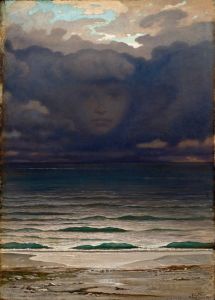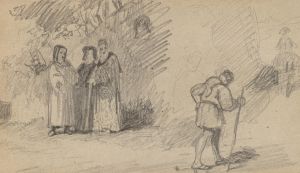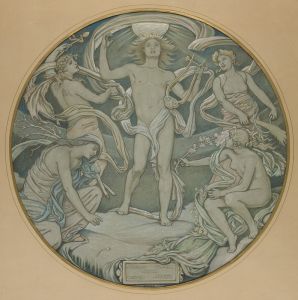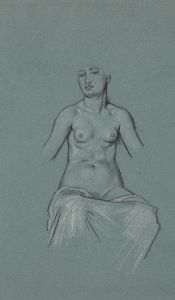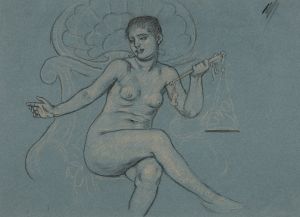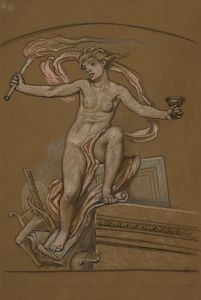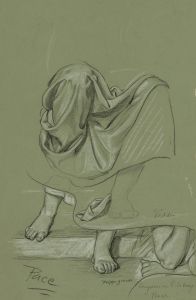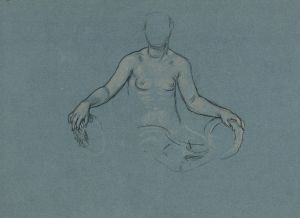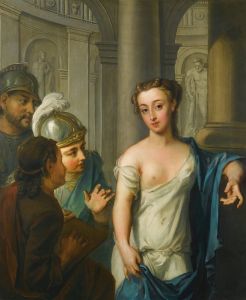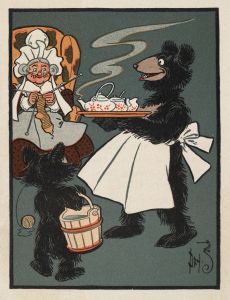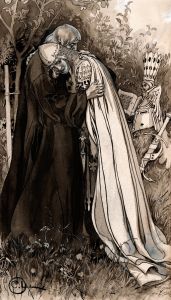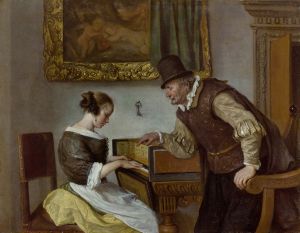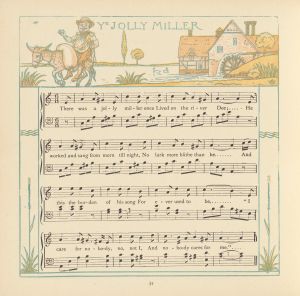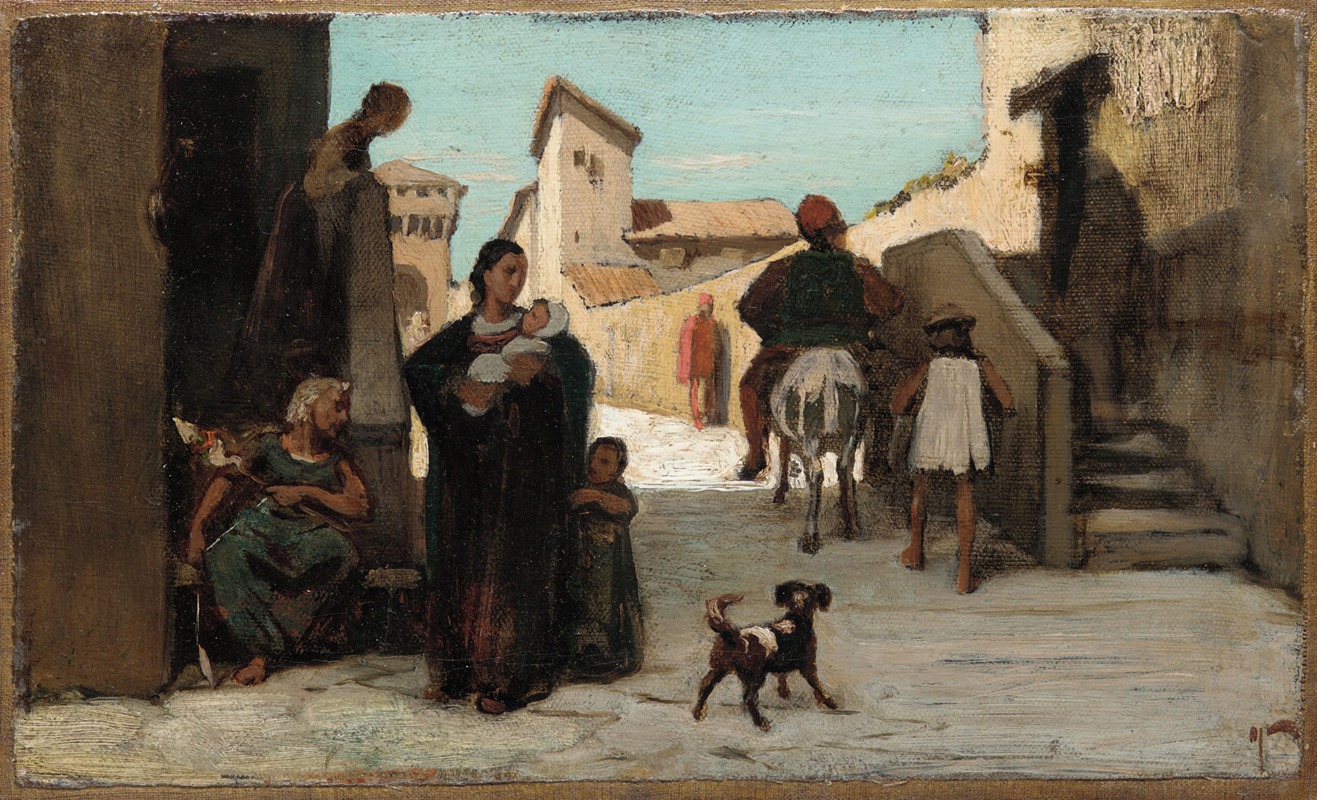
The Fable of the Miller, His Son, and the Donkey No. 4
A hand-painted replica of Elihu Vedder’s masterpiece The Fable of the Miller, His Son, and the Donkey No. 4, meticulously crafted by professional artists to capture the true essence of the original. Each piece is created with museum-quality canvas and rare mineral pigments, carefully painted by experienced artists with delicate brushstrokes and rich, layered colors to perfectly recreate the texture of the original artwork. Unlike machine-printed reproductions, this hand-painted version brings the painting to life, infused with the artist’s emotions and skill in every stroke. Whether for personal collection or home decoration, it instantly elevates the artistic atmosphere of any space.
Elihu Vedder was an American symbolist painter, born in 1836 and known for his allegorical works and illustrations. One of his notable works is "The Fable of the Miller, His Son, and the Donkey No. 4," which is part of a series of paintings inspired by the well-known fable. This fable, often attributed to Aesop, tells the story of a miller and his son who, while traveling with their donkey, try to please everyone they meet, ultimately leading to unintended consequences.
Vedder's interpretation of this fable reflects his interest in symbolism and moral lessons. The painting captures the essence of the story, which is a commentary on the futility of trying to satisfy everyone and the importance of making one's own decisions. This theme was particularly resonant during the late 19th century, a time when societal norms and expectations were being questioned and redefined.
In "The Fable of the Miller, His Son, and the Donkey No. 4," Vedder employs his characteristic style, which often includes a muted color palette and a focus on the expressive potential of the human figure. His use of symbolism is evident in the way he portrays the characters and the donkey, each representing different facets of human nature and societal pressure.
Vedder's work was influenced by his extensive travels and exposure to various artistic movements. He spent a significant amount of time in Italy, where he was influenced by the Renaissance masters as well as contemporary European art movements. This exposure is reflected in his detailed compositions and the classical elements present in his work.
The painting is part of a broader body of work by Vedder that explores themes of human folly, wisdom, and the complexities of human nature. His interest in these themes is also evident in his illustrations for the Rubaiyat of Omar Khayyam, which remain some of his most celebrated works.
"The Fable of the Miller, His Son, and the Donkey No. 4" is a testament to Vedder's ability to convey complex moral and philosophical ideas through art. His work invites viewers to reflect on their own lives and the societal pressures they face, encouraging a deeper understanding of the human condition.
Vedder's legacy as a symbolist painter is marked by his unique ability to blend narrative and symbolism, creating works that are both visually striking and intellectually engaging. His contributions to American art are significant, and his works continue to be studied and appreciated for their depth and insight.
Overall, Elihu Vedder's "The Fable of the Miller, His Son, and the Donkey No. 4" is a compelling piece that captures the timeless nature of its source material while showcasing the artist's distinctive style and thematic concerns.





